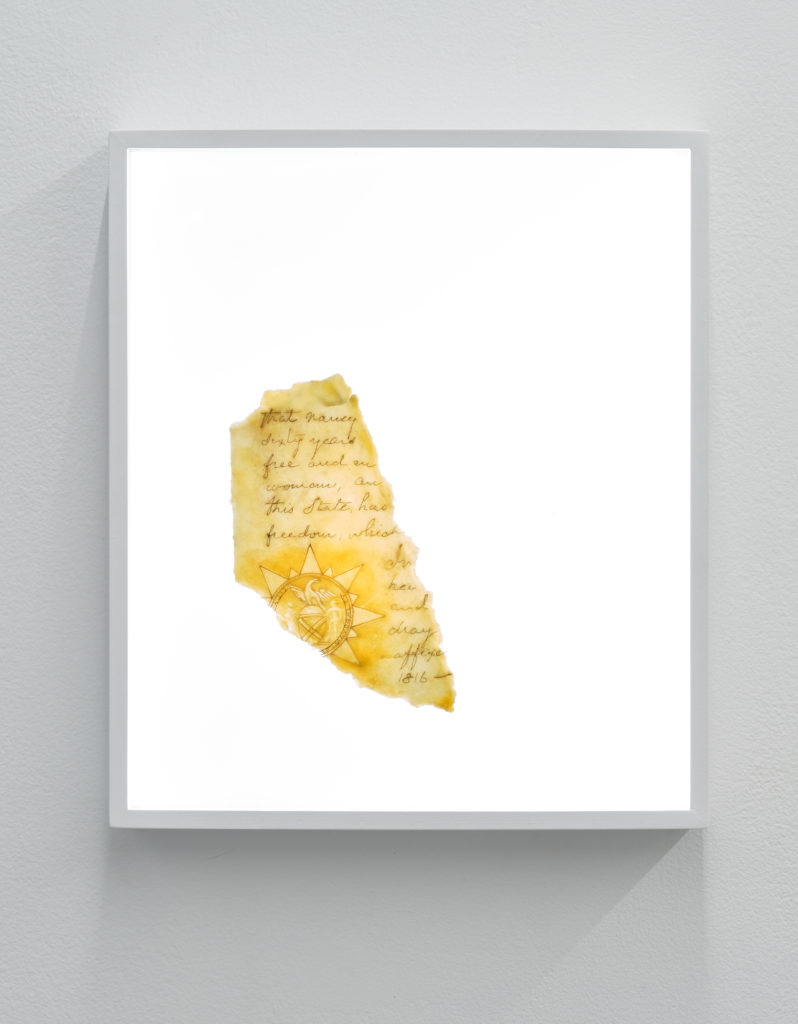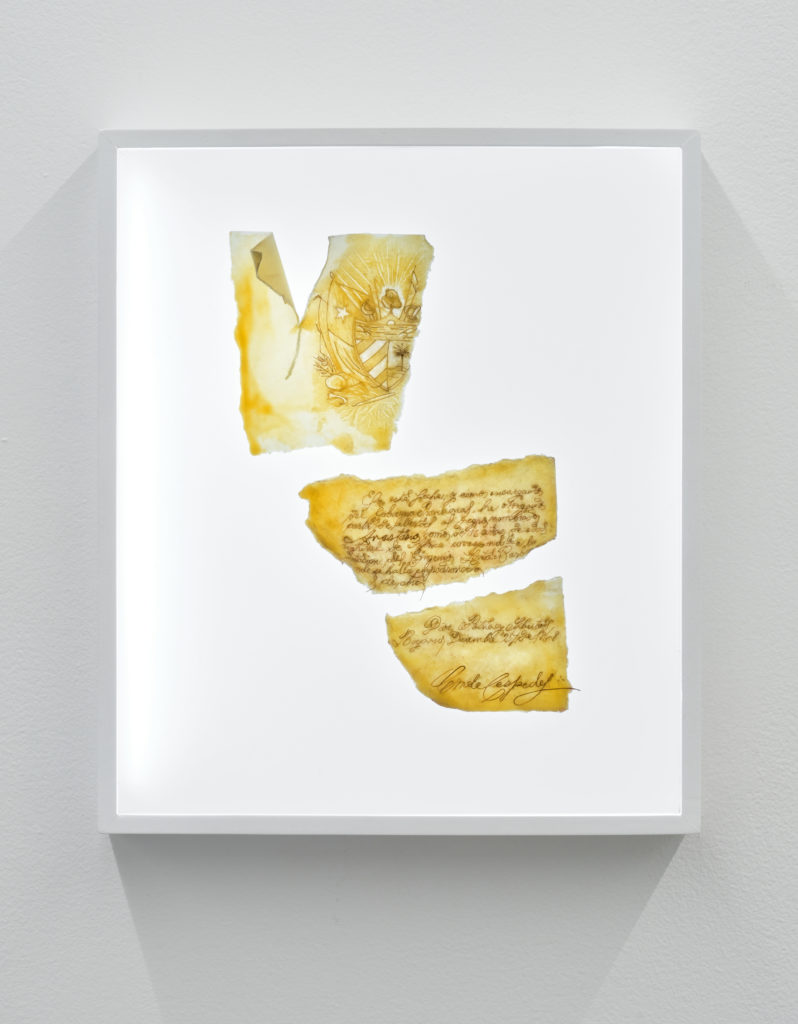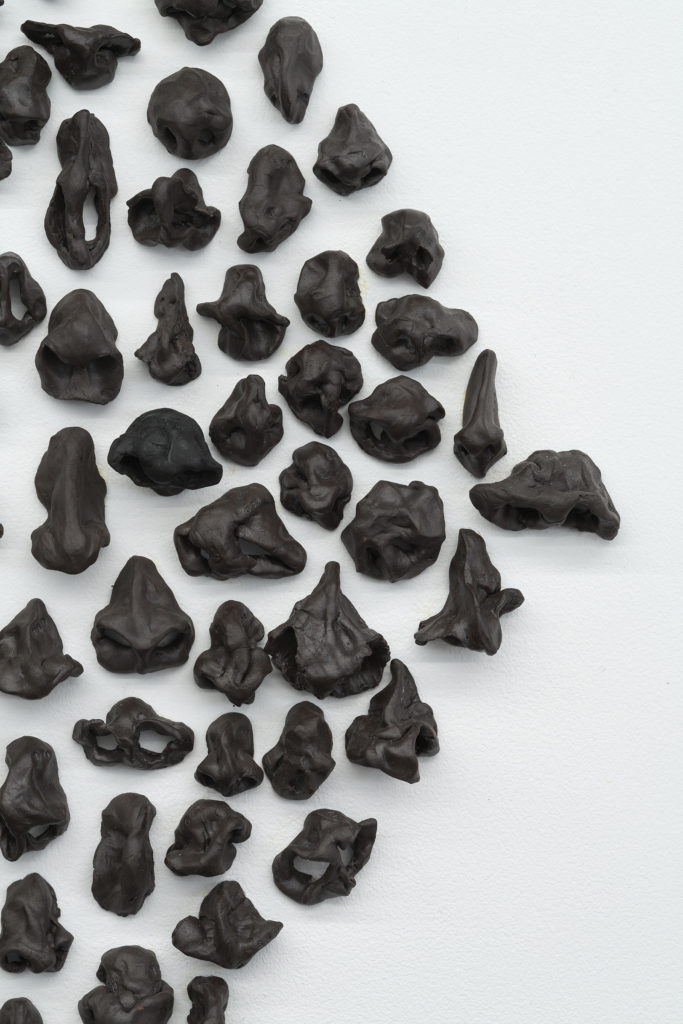
Javier Castro, Four Basic Things (Coconuts) (video still), 2018. Run time 06:40.
Open Wounds Educational and Accessibility Materials (download PDF)
Through a series of videos, installations, documents, and sculptures, Afro-Cuban artist Javier Castro’s solo exhibition Open Wounds questions the broken promises of a postcolonial world. While many of the practices at the center of the work on view draw directly from the artist’s experiences with the island, the larger exhibition interrogates methods of manipulation embedded within prevalent social structures, including language, economic power, and religion. The show is the artist’s most personal contemplation of the social foundations that underlie our intimate and communal relationships, and the oppression, grief, and injustice that they represent within Black communities.
“My intention is to reflect on the ways that we talk and act that reinforce the prevailing social hierarchy in a search to decolonize how we think and behave. Open Wounds confronts the mistreatment and abuse of Black people and the normalization of these practices against a population with the lowest life expectancy worldwide. I intend to reveal the heritage of enslavement and how these histories continue to shape how we define our present. As a Black man who has been exposed to this reality daily, I explore themes of death, vulnerability, race, time, and value within our contemporary society.
“Negro’s Nose, a ceramic installation, focuses on forms of verbal violence and linguistic racism that are used to dehumanize Black communities. The installation is derived from the phrase ‘Hazlo como hacer nariz de negro en tiempos de fango’ (‘Do it like making a negro’s nose in times of mud’), commonly used in the homes of white families in the Cuban countryside to suggest doing something without care for quality, finish, or finesse; it does not need to be well done; take it, shrink it, throw it and it will be enough for the purpose intended. Covering the walls of the gallery, 2,000 ceramic noses are installed to resemble the arrangement of enslaved Africans in the trade ships. The repetition of the numbered and branded noses becomes a meditation on the harm of daily language.
“Of vital importance to formerly enslaved persons throughout the colonial era, Certificates of Freedom carried the fate of their owners. Reproduced as fragments in paper, beeswax, and gold wire, and installed as a series of lightboxes, Freedom Papers demonstrates the fragility and vulnerability of the freed person. The wax resembles the flesh, the marked body of the enslaved individual, while the gold writing alludes to the critical value of these papers. The fragmentation symbolizes the broken dreams of freedom, frustration, and loss.
“Four Basic Things (Coconuts) focuses on themes of uncertainty, anxiety, fortune, and control. A spiritual man throws four pieces of coconut to the ground to predict the future, but the tale of fate is never revealed to the viewer. Part of the 2018 series Four Basic Things, the video draws on Chamalongos, a divinatory system of the Palo Mayombe religion brought by enslaved people from Congo to Cuba and appropriated as Obi by Yorubas on the island. In this practice, the oracle reads the arrangement of four thrown coconut pieces to answer questions asked by the practitioners. According to the worshippers, it is the most effective way to communicate with ancestors, divinities, and other powers. To be able to read the answers, one must see the position of all four pieces of coconut. In this video, one or more pieces are always landing out of frame, hence the incertitude.
“Finally, in a direct reference to Russian avant-garde artist and art theorist Kazimir Malevich’s “Black Square” (1915), the video diptych Black on Black – White on White offers a criticism of Malevich’s theory of art as a purely self-referential object. I believe the opposite. This piece brings Malevich’s position into a sociopolitical space. For me, art is political. Black on Black was filmed in the darkness of the Cuban streets, a natural environment, while White on White was filmed in MIT using multiple technological resources to recreate the desired ambient tone. The color of the skin of the subjects allows them to camouflage and ultimately disappear.”
– Javier Castro






















Special thanks to our deeply generous and beloved community for supporting the materialization of this project: Tomas Benincasa Reade, Gigi DeLa Torre, Robert Drach, Maryse Maher, Lulu Meng, Owen Meng, Kassiri Perez, Emilie Sano, Ana Vasquez, and Eva Wang.
Javier Castro (b. 1984) is a Cuban artist whose groundbreaking work focuses on the use of video and multimedia installations to explore the human experience and modes of survival. He uses history to create new analogies and ways of understanding reality and social conflicts.
Castro gets inspiration from everyday aesthetics, modes of survival and affective relationships. He examines contemporary society by presenting a unique perspective of diverse realities; from pleasures and frustrations, to vice and violence, introducing a reflection on the complex condition and psychological struggle of the human being. In this way topics, such as economy, language, sexuality, religion and race are of great interest for his research.
